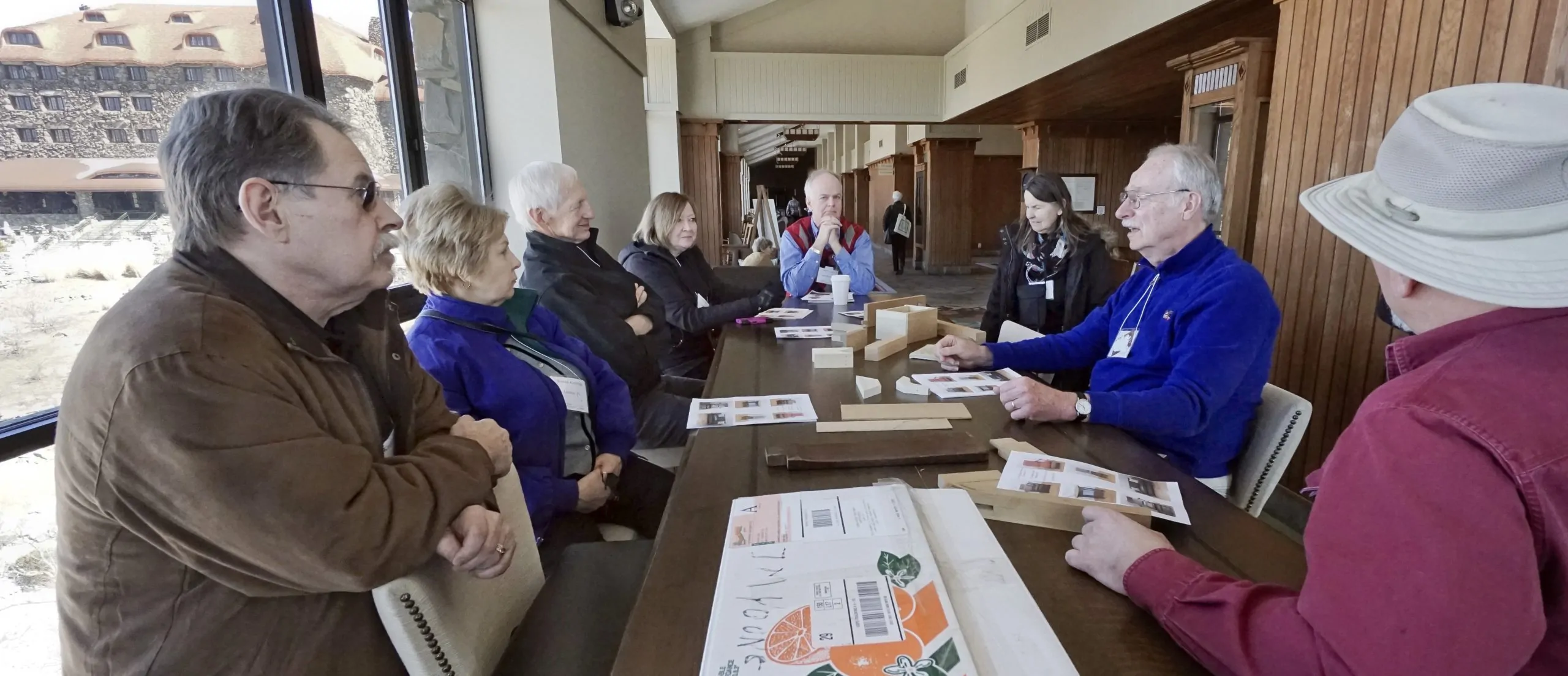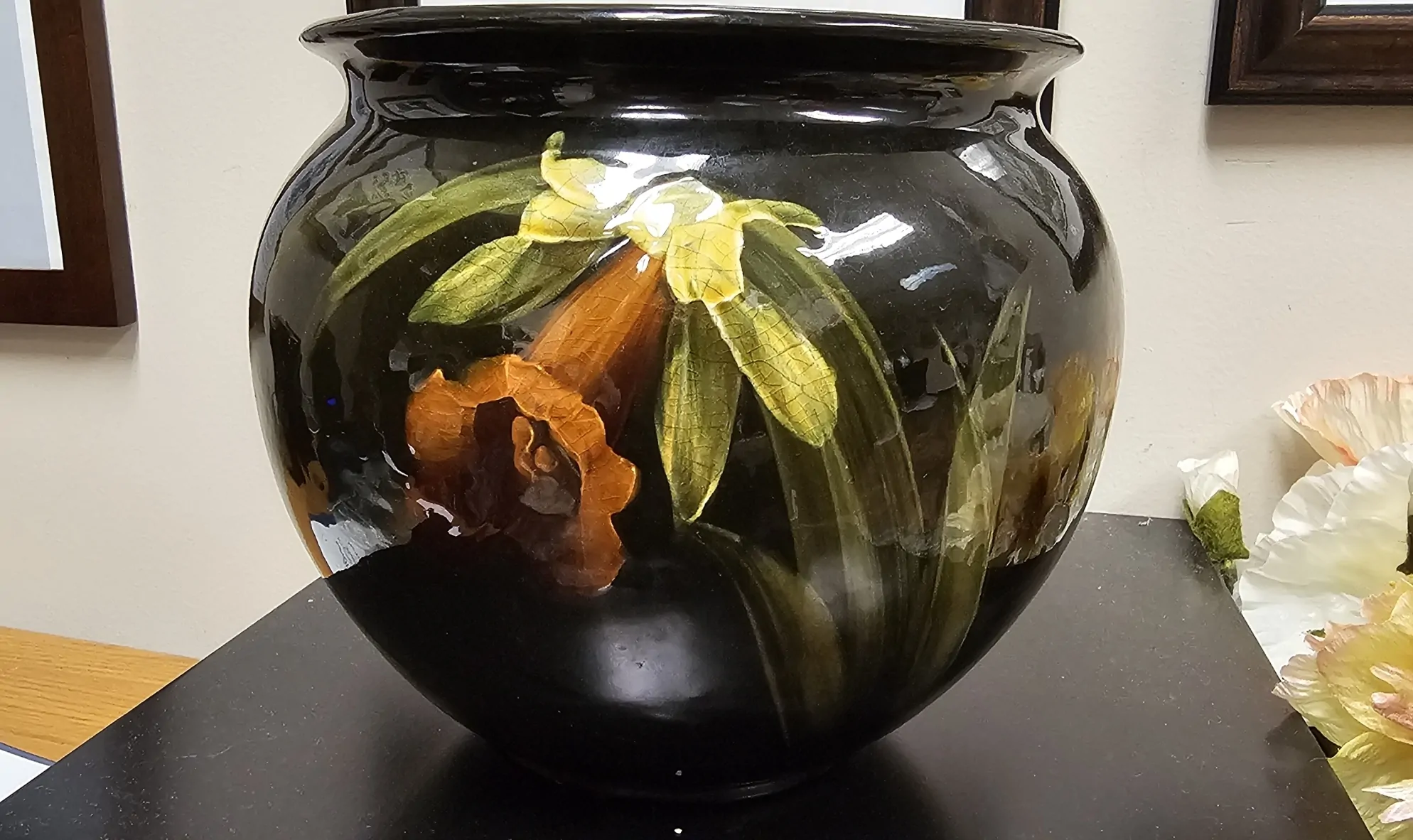A Case of Buyer’s Remorse
by Kate Nixon
Sooner or later, a collector is almost destined to run that sinking feeling that can eat you from the inside if you aren’t careful. Buyer’s Remorse: a feeling of regret experienced after making a purchase, especially one seemed as extravagant.
Odds are even if you aren’t a collector, you’ve experienced buyer’s remorse before. It’s a common feeling if you have money to spend.
We all know the importance of being a researched buyer when you enter an antiques show and we also know the pull of being attracted to the natural beauty of these works. That’s why we recruit the help of experienced collectors during the National Arts and Crafts Conference and Shows. If you need some reminders in the meantime, I suggest you purchase catalogs of Arts & Crafts era antiques (you can easily procure some from Turn of the Century Editions) or seek the advice of our wide network of experts (N. Gordon Gray spoke in our 2021 virtual Arts & Crafts Conference on recognizing furniture fakes and forgeries). Experts will certainly flock to the Grove Park Inn in February and there are many who have a presence online.
However, sometimes collectors purchase and rejoice — only to be hit by a life hardship.
N. Gordon Gray discusses furniture fakes and forgeries during a Small Group Discussion at the National Arts and Crafts Conference at the Grove Park Inn in Asheville, North Carolina, February 20, 2015. Photo by Ray Stubblebine
Case in point: In a recent online auction, I won two items. I was thrilled: I felt I wasn’t breaking the bank since I knew my limits and for the first time, I had a leather bound item in my collection. Slowly, my very small collection was starting to reflecting my colors, my interests, and felt like me.
Two days later, Helene came crashing in. You’ve seen the footage, so you know the serious nature of that name.
Days later from my small auction victory, I found myself waiting in the longest line of recent memory to purchase a maximum of two 24 packs of bottled water I grabbed at a local Lowe’s store. My thoughts thanking a higher power that I had gotten to the store early enough turned to guilt as I watched people enter the store in despair as they realized the store had sold out of needed water. Needless to say, it was a couple weeks before I could even connect with my Arts & Crafts mindset – and regain most of my utilities – again. I was incredibly lucky that my house wasn’t damaged. But if it was, I would have gathered my options for selling.
A McCoy Pottery Jardiniere I bought from an Antiques warehouse that identified it incorrectly as Weller Pottery. I loved the look of it anyway and keep it for the lesson.
I am – before and now – a collector and have tremendous love and respect for the antiques and contemporary works of the Arts and Crafts movement. As each shred of normalcy was restored and when I could access my office again, it is clear that my love for the Arts and Crafts movement and its collectors still burns bright.
But my fellow Ashevilleans and I are still in a state of recovery after a natural disaster – and along with that comes financial recovery. If you’re a collector in recovery from a traumatic situation, it’s hard to ignore the feeling of seeking options for financial relief.
That being said, here are helpful things to consider if you are ever in a situation where your head is stuck with buyer’s remorse:
1. Reconnect with the original “Why” and see if it still holds true. Does this item fulfill you? Did you believe the item would look gorgeous in your house? Did you look at that item and it made you happy? Does it still? If you look at the item now and you can say with confidence “This item really does look good in my house” or if you can still feel happy looking at it, then your efforts were not in vain. If not or you simply can’t ignore any financial stress outweighing your love for the object, consider this next point.
2. Be honest with yourself. Was your purchase a researched buy or an impulse buy? The ease of online shopping is nice for convenience’s sake, but is a breeding ground for impulse buys. If you researched your item and gave yourself a realistic budget and still said yes, then it is certainly a reason to keep your item. If it was an impulse buy, it’s time to consider the next point.
3. If your expenses have greatly increased and the options for financial aid are few, you may need to sell. Be able to let an item or two go at first. In the first year I started working for Bruce and started to write about the antiques of this movement, I thought for a number of items ‘I can’t afford this’ and in some cases, ‘I could never afford this.’ A reassuring thought I had to counter this was that the auctions will always have beautiful things to add to your house and collections always continue on in some form. So if you do need to regretfully let go of some items, know that you can always buy beautiful things when you have the money to spare again. Be able to start with items that you can part with easily.
4. Make sure you have proof of authenticity for your high value items. If you don’t, consult with an appraiser. If you are indeed considering selling, do your research into what the item is worth. LiveAuctioneers.com is a great beginner’s tool to check the history of what your item or similar items have sold for and to check what the estimates were. Look into appraisal services to get an official appraisal for your works.
5. If you do need to sell your high value items, what method is right for you? If you do decide to sell, there are a number of options. You can sell to dealers, ask around if trusted collectors may want it or know of anyone looking for a similar item, or look into auction services using reputable auctioneers.
To wrap up my story, I decided wholeheartedly to keep one item — and the jury’s still out on the other. As I mentioned before, collections will continue to turn up in auctions. There will always be beauty, but life happens. Make sure your purchases are researched and if you need to downsize, check your options.
#


